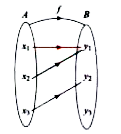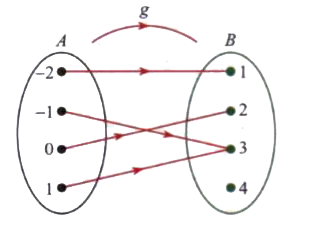A function f is defined on an interval [a, b]. Which of the following statement(s) is are incorrect? (A) If f(a) and f(b) have opposite signs,then there must be a point c∈(a,b) such that f(c)=0.
if f(a ) and f(b) have opposite sings then there must be a point c∈(a,b) such that f(c ) =0
if f is continuous on [a,b],f(a)<0,andf(b)>0, then there must be point c∈(a,b) such that f( c) =0.
if f is continuous on [a,b] , and there is point c in (a,b) such that f( c) -0 , then f(a) and f(b) have opposite signs
if f has no zeros on [a,b] then f(a) and f(b) have the same sign.
The correct Answer is:A, C, D
Step by step video, text & image solution for A function f is defined on an interval [a, b]. Which of the following statement(s) is are incorrect? (A) If f(a) and f(b) have opposite signs,then there must be a point cin(a,b) such that f(c)=0. by Maths experts to help you in doubts & scoring excellent marks in Class 12 exams.
Updated on:21/07/2023Similar Questions
Consider a real valued continuous function f(x) defined on the interval [a, b). Which of the followin statements does not hold(s) good? (A) If f(x)≥0 on [a, b] then ∫baf(x)dx≤∫baf2(X)dx (B) If f (x) is increasing on [a, b], then f2(x) is increasing on [a, b]. (C) If f (x) is increasing on [a, b], then f(x)≥0 on (a, b). (D) If f(x) attains a minimum at x = c where a<c<b, then f'(c)=0.
View SolutionThe function f(x) is defined on the interval [0,1]. What are the domains of definition of functions.
(a) f(sinx),(b)f(2x+3)?
View Solution
Knowledge Check
A function f:A→B is defined as :

Which of the following is true ?Aone - one functionBone-one and onto functionCmany - one and into functionDmany-one and onto function
Let f be a differentiable function on the open interval(a, b). Which of the following statements must be true? (i) f is continuous on the closed interval [a,b],(ii) f is bounded on the open interval (a,b)
View SolutionLet fandg be function continuous in [a,b]and differentiable on [a,b].If f(a)=f(b)=0 then show that there is a point c∈(a,b) such that g'(c)f(c)+f'(c)=0.
View SolutionA function f:A→B is defined by the following diagram. Classify the function

View SolutionLet f be continuous on [a, b] and assume the second derivative f" exists on (a, b). Suppose that the graph of f and the line segment joining the point (a,f(a))and(b,f(b)) intersect at a point (x0,f(x0)) where a<x0<b. Show that there exists a point c∈(a,b) such that f(c)=0.
View SolutionThe function f(x) is defined on the interval (0,1). What are the domains of definition of the following functions.
(a) f(3x2),(b)f(x−5),(c)f(tanx)?
View SolutionPARAGRAPH : If function f,g are continuous in a closed interval [a,b] and differentiable in the open interval (a,b) then there exists a number c in (a,b) such that [g(b)-g(a)]f'(c)=[f(b)-f(a)]g'(c) If f(x)=ex and g(x)=e−x,a≤x≤b c=
View SolutionStatement 1: If both functions f(t)andg(t) are continuous on the closed interval [1,b], differentiable on the open interval (a,b) and g′(t) is not zero on that open interval, then there exists some c in (a,b) such that f′(c)g′(c)=f(b)−f(a)g(b)−g(a) Statement 2: If f(t)andg(t) are continuou and differentiable in [a, b], then there exists some c in (a,b) such that f′(c)=f(b)−f(a)b−aandg′(c)g(b)−g(a)b−a from Lagranes mean value theorem.
View Solution
